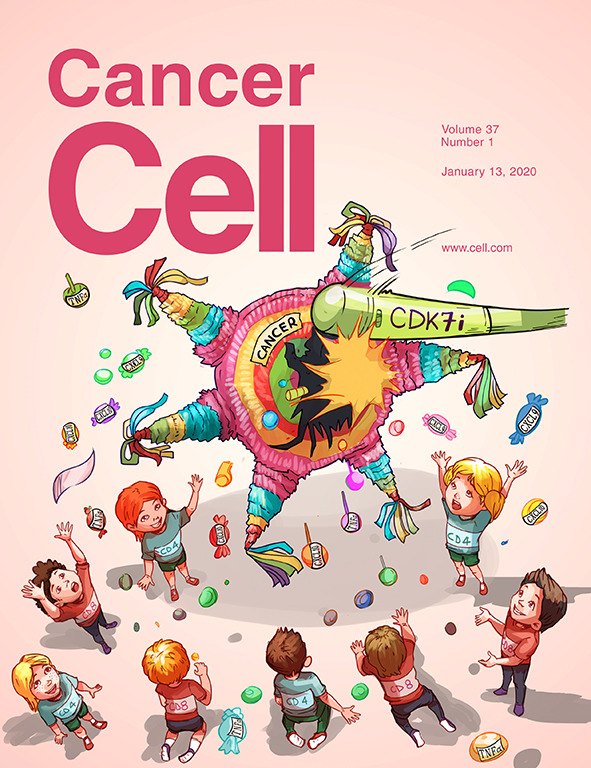Enhancing anti-tumor immunity of natural killer cells through targeting IL-15R signaling
IF 44.5
1区 医学
Q1 CELL BIOLOGY
引用次数: 0
Abstract
Interleukin-15 receptor (IL-15R) agonists induce anti-tumor immunity in pre-clinical models. However, dose-limiting toxicity has hampered their clinical development. We performed genome-wide CRISPR screens to reveal the complete IL-15R signaling mechanism in natural killer (NK) cells and discovered that ubiquitin-dependent IL-15R degradation is the dominant mechanism restraining IL-15R signaling. Key hits included the NEDD8 E2-conjugating enzyme UBE2F, the ubiquitin E3-ligase ARIH2, and Cullin-5 RING E3 ligase (CRL5) members. We found that UBE2F was required for neddylation and activation of CUL5, whereas ARIH2 contributed to CRL5-mediated IL-15RB degradation. Ablation of ARIH2 or UBE2F increased IL-15RB surface expression and enhanced signaling, resulting in proinflammatory cytokine production and augmented natural and CAR-mediated cytotoxicity. In mice lacking Arih2, Rnf7, or Ube2f, we observed that the IL-15R hyperresponsive NK cells exhibited superior in vivo anti-tumor immunity against primary and disseminated metastatic tumors. Thus, we have identified the enzymes UBE2F and ARIH2 as tractable immunotherapy drug targets.靶向IL-15R信号增强自然杀伤细胞抗肿瘤免疫
白细胞介素-15受体(IL-15R)激动剂在临床前模型中诱导抗肿瘤免疫。然而,剂量限制性毒性阻碍了它们的临床发展。我们进行了全基因组CRISPR筛选,揭示了自然杀伤细胞(NK)中IL-15R的完整信号传导机制,发现泛素依赖性IL-15R降解是抑制IL-15R信号传导的主要机制。关键靶点包括NEDD8 e2偶联酶UBE2F、泛素E3连接酶ARIH2和Cullin-5 RING E3连接酶(CRL5)成员。我们发现UBE2F是类化修饰和CUL5激活所必需的,而ARIH2则有助于crl5介导的IL-15RB降解。消融ARIH2或UBE2F可增加IL-15RB表面表达并增强信号传导,导致促炎细胞因子产生和增强自然和car介导的细胞毒性。在缺乏Arih2, Rnf7或Ube2f的小鼠中,我们观察到IL-15R高反应NK细胞对原发性和弥散性转移性肿瘤表现出优越的体内抗肿瘤免疫。因此,我们已经确定了UBE2F和ARIH2酶作为可处理的免疫治疗药物靶点。
本文章由计算机程序翻译,如有差异,请以英文原文为准。
求助全文
约1分钟内获得全文
求助全文
来源期刊

Cancer Cell
医学-肿瘤学
CiteScore
55.20
自引率
1.20%
发文量
179
审稿时长
4-8 weeks
期刊介绍:
Cancer Cell is a journal that focuses on promoting major advances in cancer research and oncology. The primary criteria for considering manuscripts are as follows:
Major advances: Manuscripts should provide significant advancements in answering important questions related to naturally occurring cancers.
Translational research: The journal welcomes translational research, which involves the application of basic scientific findings to human health and clinical practice.
Clinical investigations: Cancer Cell is interested in publishing clinical investigations that contribute to establishing new paradigms in the treatment, diagnosis, or prevention of cancers.
Insights into cancer biology: The journal values clinical investigations that provide important insights into cancer biology beyond what has been revealed by preclinical studies.
Mechanism-based proof-of-principle studies: Cancer Cell encourages the publication of mechanism-based proof-of-principle clinical studies, which demonstrate the feasibility of a specific therapeutic approach or diagnostic test.
 求助内容:
求助内容: 应助结果提醒方式:
应助结果提醒方式:


